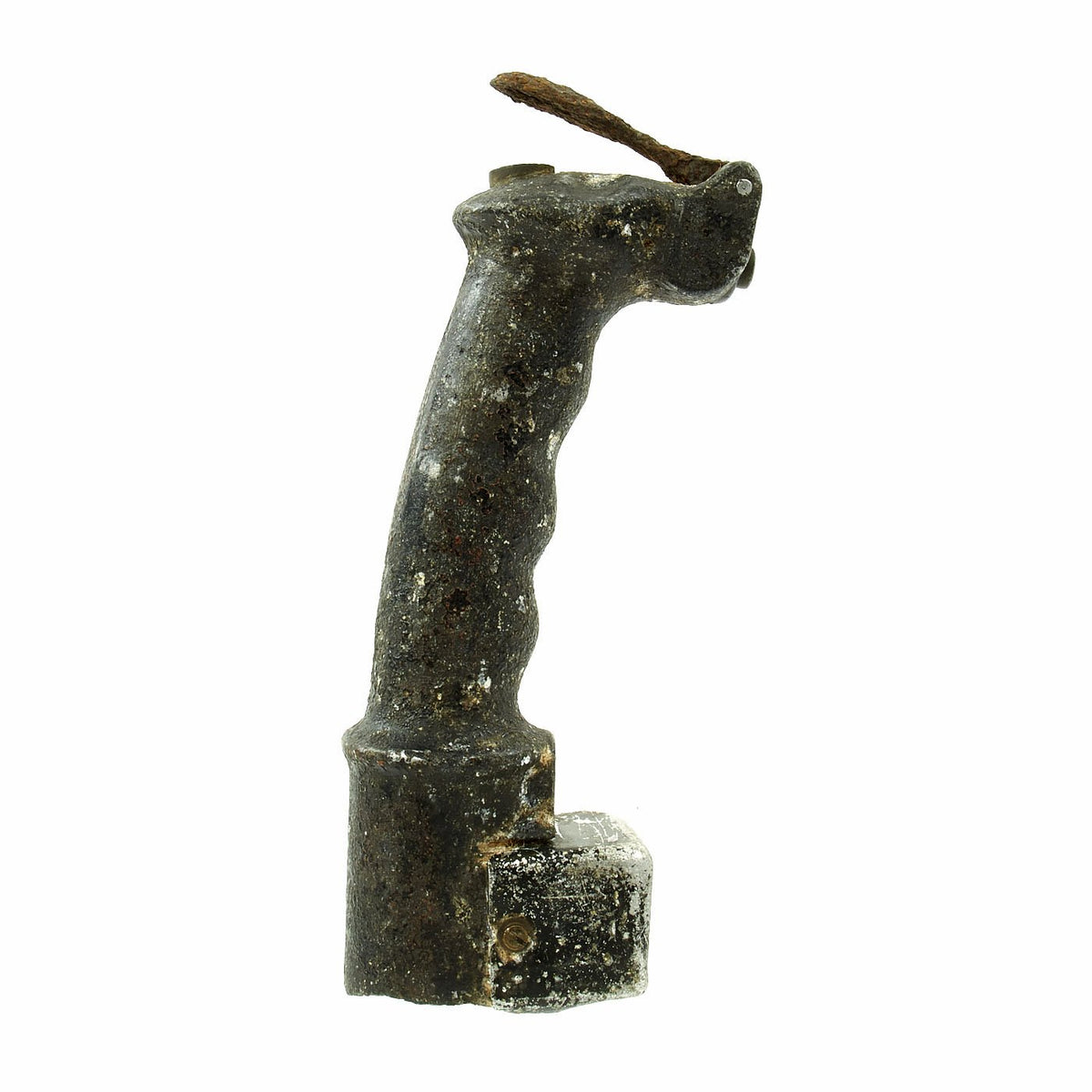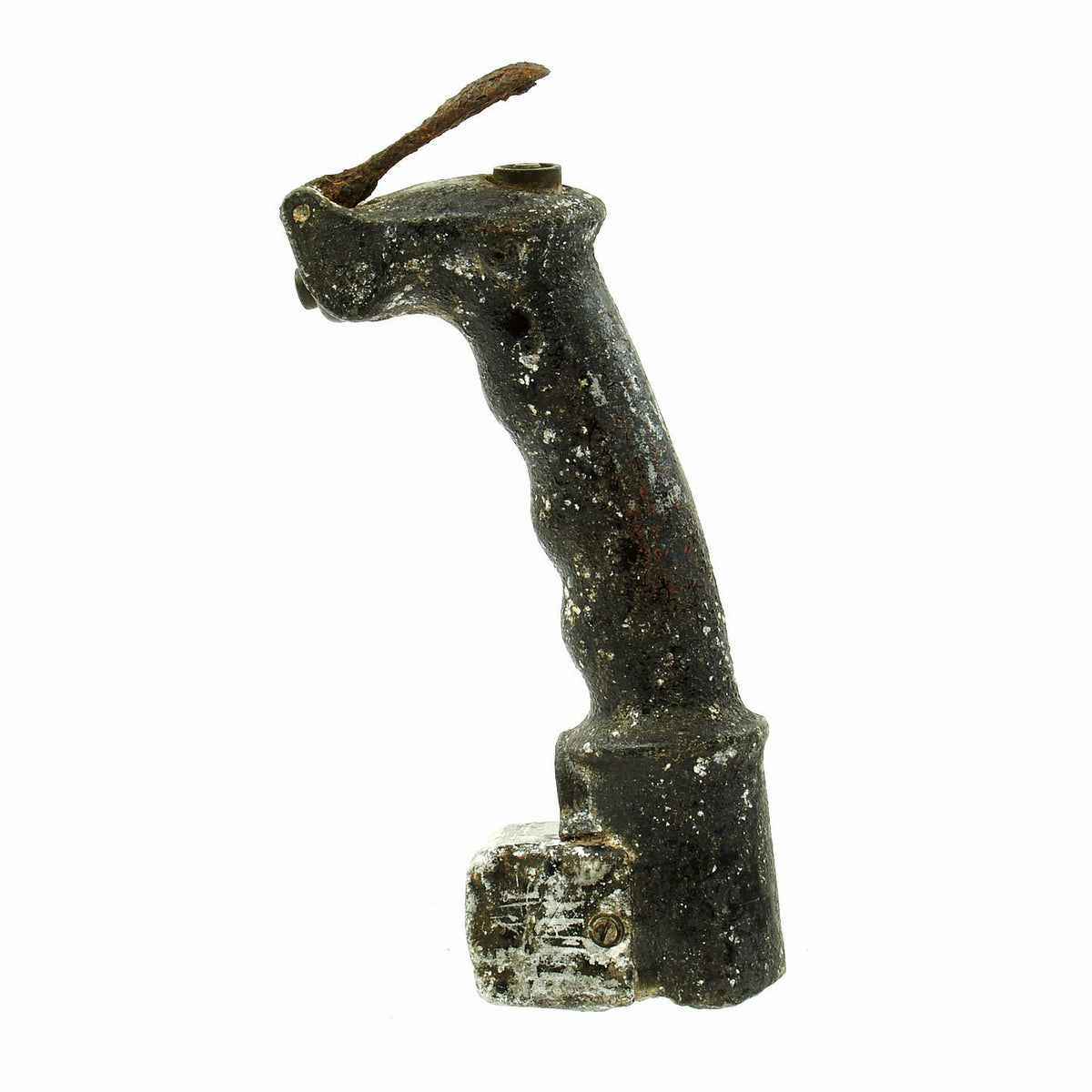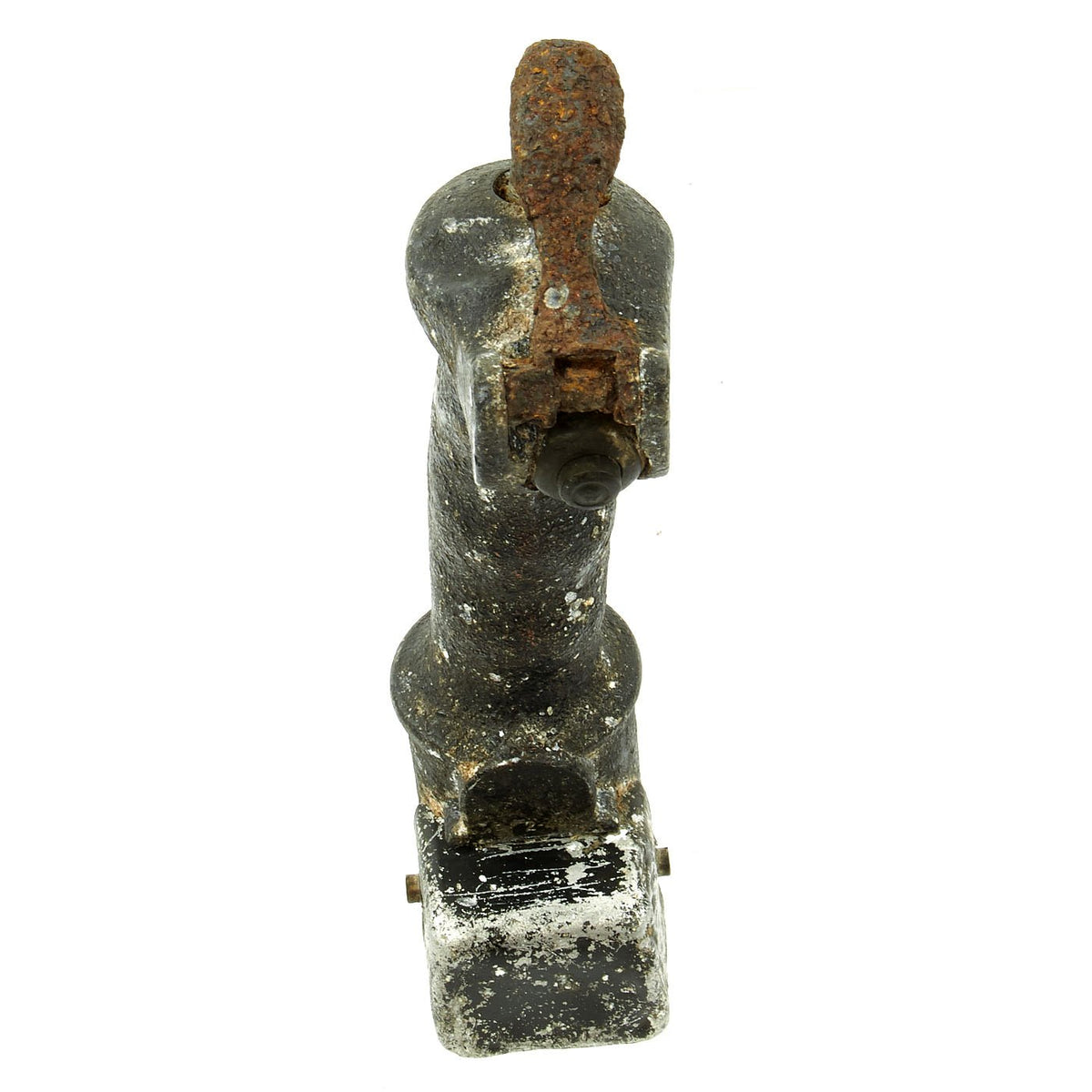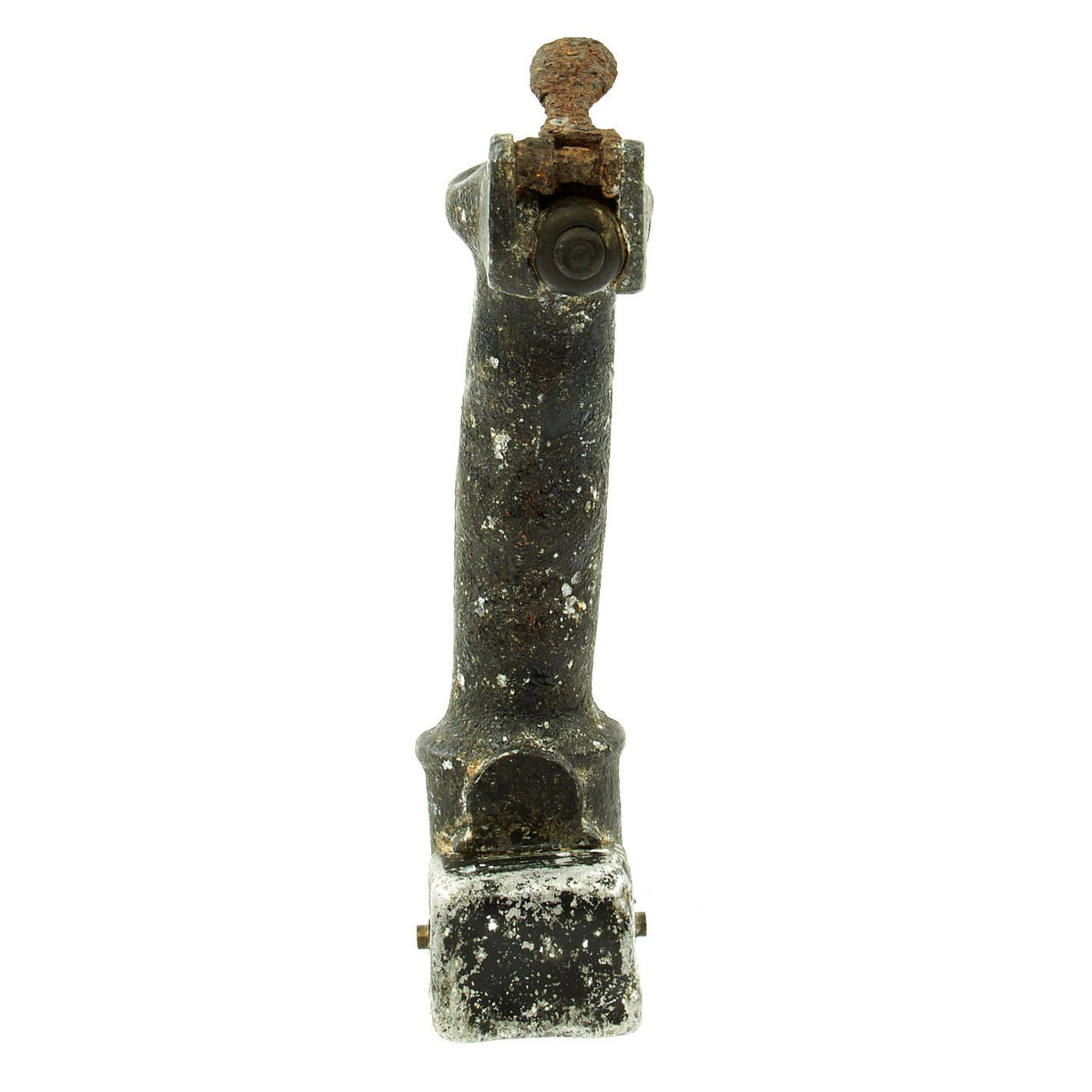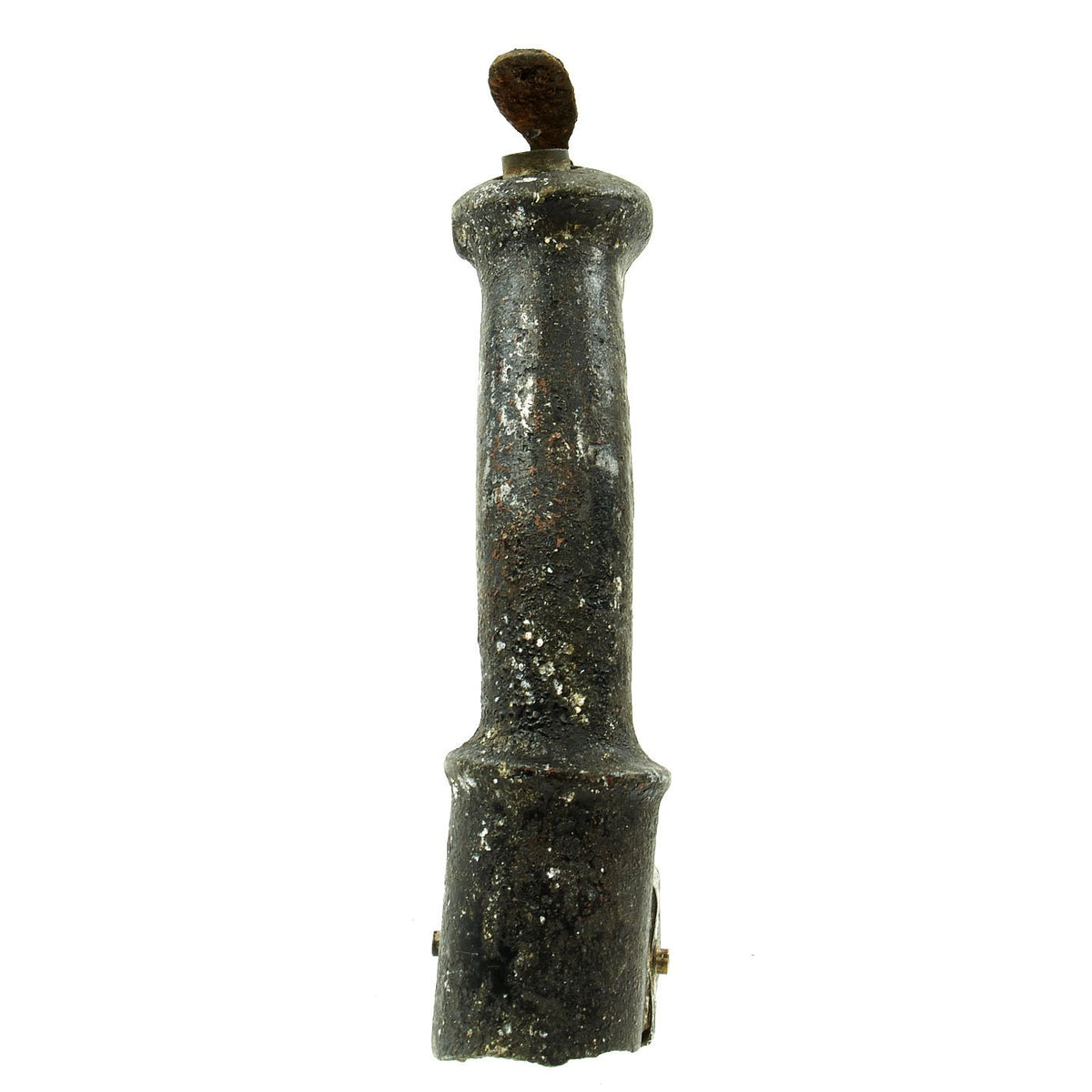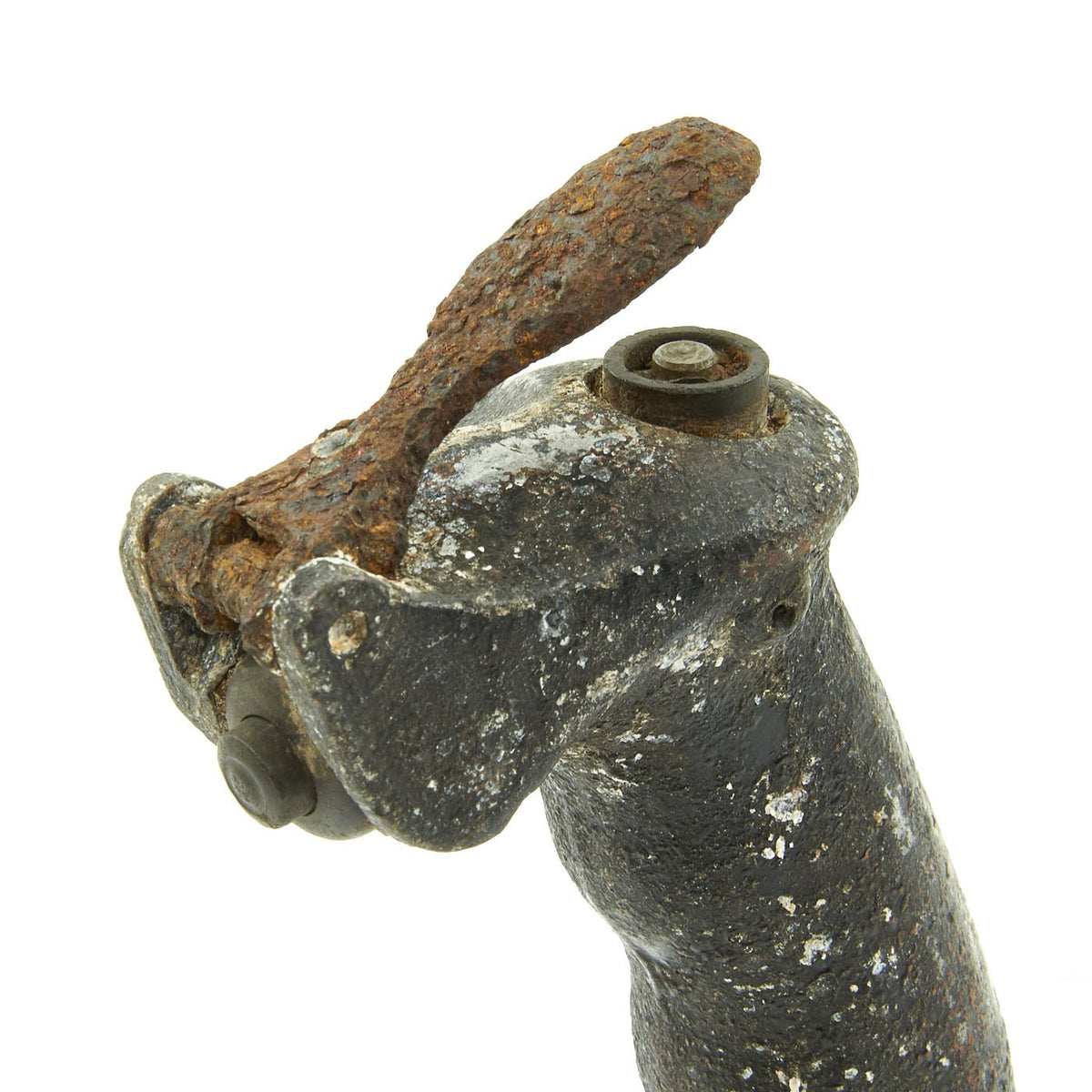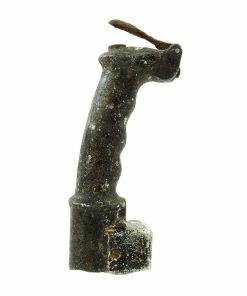Original German WWII Luftwaffe Messerschmitt Bf 109 Control Stick KG13B ME-109 – Ardennes Excavated Original Items
$ 1.195,00 $ 298,75
Original Item: Only One Available. The Messerschmitt Bf 109, was a German World War II fighter aircraft that was the backbone of the Luftwaffe’s fighter force. The Bf 109 first saw operational service during the Spanish Civil War (1939) and was still in service at the dawn of the jet age at the end of World War II (1945). It was one of the most advanced fighters of the era, including such features as all-metal monocoque construction, a closed canopy, and retractable landing gear. It was powered by a liquid-cooled, inverted-V12 aero engine. From the end of 1941, the Bf 109 was steadily being supplemented by the superior Focke-Wulf Fw 190.
It was commonly called the Me 109 most often by Allied aircrew and even amongst the German aces themselves even though this was not the official German designation. The “Bf 109” designation was issued by the German ministry of aviation and represents the developing company Bayerische Flugzeugwerke and is a rather arbitrary figure.
It was designed by Willy Messerschmitt (hence Me 109) and Robert Lusser, who worked at Bayerische Flugzeugwerke, during the early to mid-1930s.
Originally conceived as an interceptor, later models were developed to fulfill multiple tasks, serving as bomber escort, fighter-bomber, day-, night-, all-weather fighter, ground-attack aircraft, and as reconnaissance aircraft. It was supplied to and operated by several states during World War II, and served with several countries for many years after the war. The Bf 109 was the most produced fighter aircraft in history, with a total of 33,984 airframes produced from 1936 up to April 1945.
The Bf 109 was flown by the three top-scoring German fighter aces of World War II, who claimed 928 victories among them while flying with Jagdgeschwader 52, mainly on the Eastern Front. The highest scoring fighter ace of all time, Erich Hartmann, flew the Bf 109 and was credited with 352 aerial victories. The aircraft was also flown by Hans-Joachim Marseille, the highest scoring German ace in the North African Campaign who achieved 158 aerial victories. It was also flown by several other aces from Germany’s allies, notably Finn Ilmari Juutilainen, the highest scoring non-German ace on the type, and pilots from Italy, Romania, Croatia, Bulgaria and Hungary. Through constant development, the Bf 109 remained competitive with the latest Allied fighter aircraft until the end of the war.
This is an incredibly rare Messerschmitt Bf 109 Control Stick which was excavated from the Ardennes Forest in the 1980s. The Ar is where The Battle of the Bulge occurred in the winter of 1944-45. This control stick retains the machine gun flip down trigger! This particular version is the model KG12A was most likely produced by Original Bruhn (which also produced various instruments for the Luftwaffe) after a design of the Argus Motoren G.m.b.H. in Berlin. The KG12A didn’t have a so-called B2-button which the later KG13 usually had (at the top left). There was only the top trigger and push button. Some early Me 109 had an additional button at the top attached by a clip or strap that was used for dropping bombs. The KG12A was used multiple airplanes including the Me 109 E, Ju 87 B and other aircraft. This example is offered in relic condition. It measures 10.5 inches tall. A truly rare and wonderful piece of WW2 aviation history!
The Battle of the Bulge, also known as the Ardennes Counteroffensive, was the last major German offensive campaign on the Western Front during World War II, and took place from 16 December 1944 to 25 January 1945. It was launched through the densely forested Ardennes region of Wallonia in eastern Belgium, northeast France, and Luxembourg, towards the end of the war in Europe. The offensive was intended to stop Allied use of the Belgian port of Antwerp and to split the Allied lines, allowing the Germans to encircle and destroy four Allied armies and force the Western Allies to negotiate a peace treaty in the Axis powers’ favor.
The Germans achieved a total surprise attack on the morning of 16 December 1944, due to a combination of Allied overconfidence, preoccupation with Allied offensive plans, and poor aerial reconnaissance due to bad weather. American forces bore the brunt of the attack and incurred their highest casualties of any operation during the war. The battle also severely depleted Germany’s armored forces, and they were largely unable to replace them. German personnel and, later, Luftwaffe aircraft (in the concluding stages of the engagement) also sustained heavy losses. The Germans had attacked a weakly defended section of the Allied line, taking advantage of heavily overcast weather conditions that grounded the Allies’ overwhelmingly superior air forces. Fierce resistance on the northern shoulder of the offensive, around Elsenborn Ridge, and in the south, around Bastogne, blocked German access to key roads to the northwest and west that they counted on for success. Columns of armor and infantry that were supposed to advance along parallel routes found themselves on the same roads. This, and terrain that favored the defenders, threw the German advance behind schedule and allowed the Allies to reinforce the thinly placed troops. The farthest west the offensive reached was the village of Foy-Nôtre-Dame, south east of Dinant, being stopped by the U.S. 2nd Armored Division on 24 December 1944. Improved weather conditions from around 24 December permitted air attacks on German forces and supply lines, which sealed the failure of the offensive. On 26 December the lead element of Patton’s U.S. Third Army reached Bastogne from the south, ending the siege. Although the offensive was effectively broken by 27 December, when the trapped units of 2nd Panzer Division made two break-out attempts with only partial success, the battle continued for another month before the front line was effectively restored to its position prior to the attack. In the wake of the defeat, many experienced German units were left severely depleted of men and equipment, as survivors retreated to the defenses of the Siegfried Line.
The Germans’ initial attack involved 410,000 men; just over 1,400 tanks, tank destroyers, and assault guns; 2,600 artillery pieces; 1,600 anti-tank guns; and over 1,000 combat aircraft, as well as large numbers of other armored fighting vehicles (AFVs). These were reinforced a couple of weeks later, bringing the offensive’s total strength to around 450,000 troops, and 1,500 tanks and assault guns. Between 63,222 and 98,000 of these men were killed, missing, wounded in action, or captured. For the Americans, out of a peak of 610,000 troops,[18] 89,000[5] became casualties out of which some 19,000 were killed. The “Bulge” was the largest and bloodiest single battle fought by the United States in World War II and the third-deadliest campaign in American history.
Fast Shipping with Professional Packaging
Thanks to our longstanding association with UPS FedEx DHL, and other major international carriers, we are able to provide a range of shipping options. Our warehouse staff is expertly trained and will wrap your products according to our exact and precise specifications. Prior to shipping, your goods will be thoroughly examined and securely secured. We ship to thousands clients each day across multiple countries. This shows how we're dedicated to be the largest retailer on the internet. Warehouses and distribution centres can be located throughout Europe as well as the USA.
Note: Orders with more than one item will be assigned a processing date depending on the item.
Before shipping before shipping, we'll conduct a thorough inspection of the items you have ordered. Today, the majority of orders will be delivered within 48 hours. The delivery time will be between 3-7 days.
Returns
The stock is dynamic and we cannot completely manage it because multiple stakeholders are involved, including our factory and warehouse. So the actual stock may alter at any time. It's possible that you may not receive your order once the order has been made.
Our policy is valid for a period of 30 days. If you don't receive the product within 30 days, we are not able to issue a refund or an exchange.
You can only return an item if it is unused and in the same state as the day you received it. You must have the item in its original packaging.
Related products
Uncategorized
Uncategorized
Armoured Fighting Vehicles of the World: AFVs of World War One (Hardcover Book) New Made Items
Uncategorized
Band of Brothers ORIGINAL GERMAN WWII Le. F.H. 18 10.5cm ARTILLERY PIECE Original Items
Uncategorized
Uncategorized
Uncategorized
Armored Burgonet Helmet & Polearm from Scottish Castle Leith Hall Circa 1700 Original Items
Uncategorized
Uncategorized
Uncategorized
Uncategorized
Uncategorized
Uncategorized
Uncategorized
Uncategorized
Uncategorized
Uncategorized
Uncategorized
Uncategorized
Uncategorized
